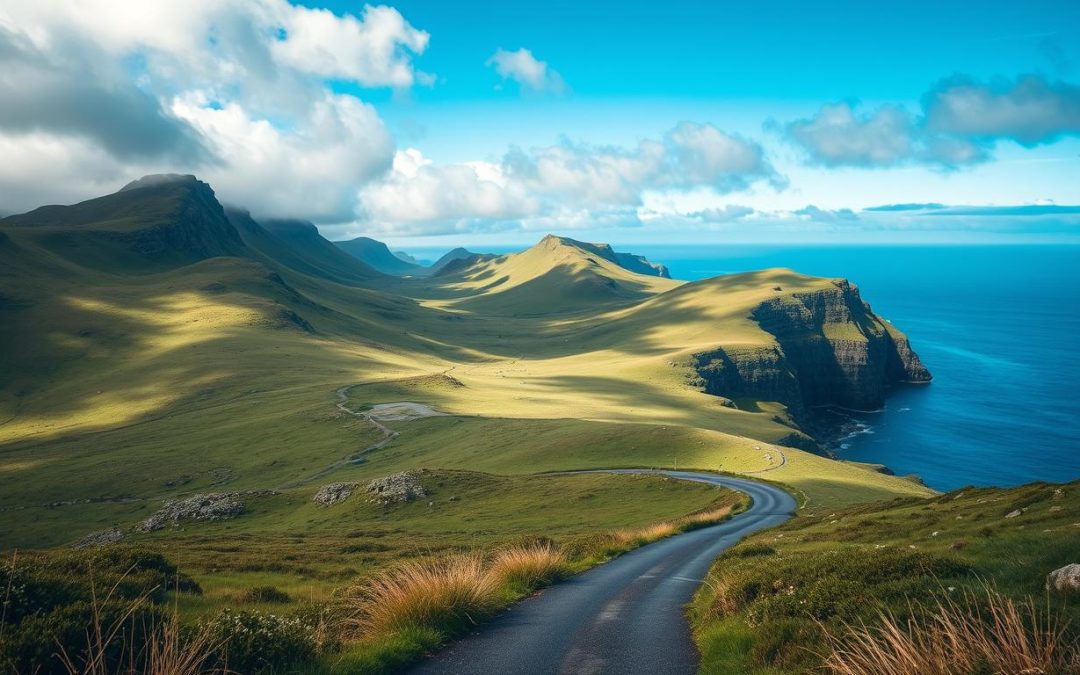Have you ever wondered how to plan a trip to a place where the weather changes as quickly as the scenery? The Faroe Islands, a stunning archipelago nestled between Iceland and Norway, offers just that. With its dramatic landscapes, lush pastures, and storybook charm, this destination is a dream for nature lovers and adventure seekers alike.
Home to fewer than 50,000 residents, the islands provide an intimate experience of both nature and culture. However, their unpredictable weather can be a challenge. This guide will help you navigate the best time to visit, ensuring you make the most of your journey. From transportation tips to local cuisine and season-specific activities, we’ve got you covered.
Whether you’re exploring hidden gems or understanding the islands’ climatic quirks, this article will prepare you for an unforgettable adventure. Ready to dive into the details? Let’s get started.
Key Takeaways
- The Faroe Islands are known for their dramatic landscapes and unpredictable weather.
- Fewer than 50,000 residents make it an intimate travel experience.
- Plan your visit during the warmer months for the best weather conditions.
- Local cuisine and seasonal activities add to the unique charm of the islands.
- Proper planning ensures you maximize your outdoor adventures.
Discovering the Faroe Islands: An Introduction
Nestled in the North Atlantic, this archipelago offers a blend of raw landscapes and rich traditions. The islands are located between Iceland and Norway, making them a perfect stop for those seeking adventure and serenity. With a population of fewer than 50,000, the sense of community here is as strong as the winds that sweep across the cliffs.
The islands are known for their dramatic scenery, from towering cliffs to lush green valleys. Each village feels like a step back in time, with traditional grass-roofed houses and a slower pace of life. Whether you’re hiking to a lighthouse or exploring a hidden waterfall, every moment here feels like a discovery.
Local traditions are deeply rooted in the culture, from fishing to storytelling. The islands’ small size means you’re never far from an authentic experience. Whether it’s a cozy café in Tórshavn or a quiet road leading to a scenic viewpoint, the islands invite you to slow down and take it all in.
This guide will help you navigate the practical and poetic aspects of your journey. From understanding the weather to planning your route, we’ll ensure you’re ready for the adventure of a lifetime. Get ready to explore a place where nature and culture come together in the most unforgettable way.
Climate and Weather Patterns in the Faroes
The weather here is as unpredictable as it is breathtaking, making every day an adventure. The islands experience a maritime subarctic climate, which means mild summers and cool, wet winters. This unique climate is shaped by the North Atlantic’s influence, creating rapid shifts that can surprise even seasoned travelers.
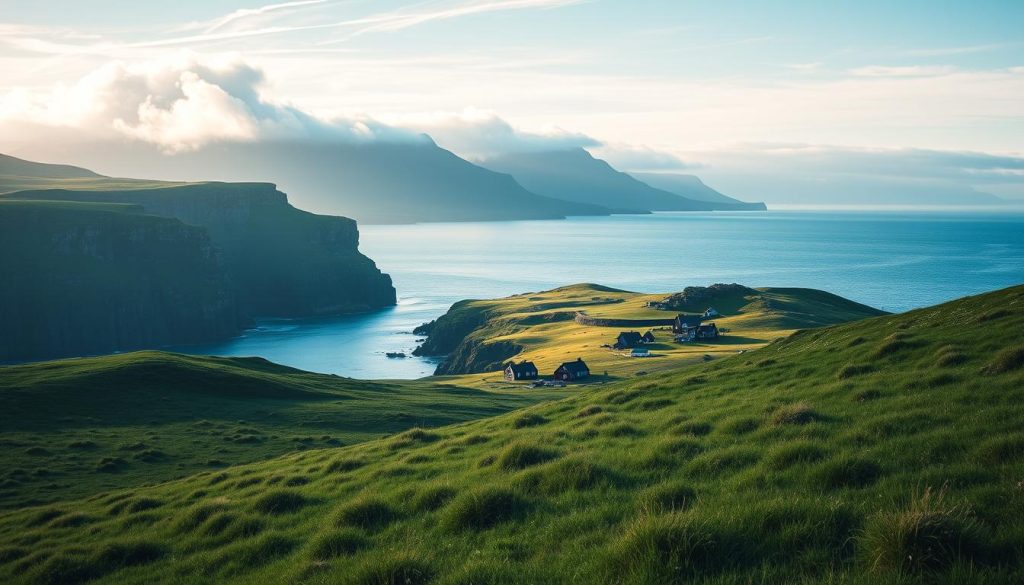
Understanding the Maritime Subarctic Climate
This type of climate is characterized by its variability. You might experience four seasons in a single day—sunshine, rain, wind, and fog. Summers are short, with average highs around 55°F, while winters are cooler, often hovering near freezing. The islands’ coastal exposure and towering cliffs amplify these changes, making weather a constant companion during your travels.
Seasonal Variability and Local Weather Tips
Daylight hours vary significantly throughout the year. In summer, you’ll enjoy nearly 19 hours of daylight, perfect for outdoor activities. Winter brings shorter days, with only about 5 hours of sunlight. Local guides recommend packing layers and waterproof gear, as rain and wind are common even in the warmer months.
- Check forecasts daily: Weather apps and local updates are your best friends.
- Dress in layers: This allows you to adapt to sudden temperature changes.
- Be flexible: Plan activities around the weather to make the most of your time.
Whether you’re hiking along dramatic cliffs or exploring coastal attractions, understanding the climate ensures a smooth and enjoyable experience. Embrace the unpredictability—it’s part of what makes this destination so special.
Faroe Islands: Best Months for a Weather-Savvy Trip
Choosing the right time to visit can make all the difference in your travel experience. The archipelago’s seasons offer distinct charms, from vibrant summer days to serene winter nights. Understanding these variations helps you plan a trip that aligns with your interests and expectations.
Summer Versus Winter: What to Expect
Summer in this region is a time of endless daylight and lively energy. With nearly 19 hours of sunlight, you’ll have ample time to explore. The weather is milder, though rain and wind are still common. This season is perfect for outdoor festivals, hiking, and bird-watching.
Winter, on the other hand, brings shorter days and cooler temperatures. Daylight lasts only about 5 hours, but the darkness creates a magical backdrop for Northern Lights viewing. While the weather can be challenging, the serene atmosphere and unique activities make it a rewarding experience.
Activities Aligned with Each Season
Summer is ideal for outdoor enthusiasts. You can hike along dramatic cliffs, attend local festivals, or explore coastal attractions. The long days allow you to pack more into your itinerary, making it a good time for first-time visitors.
Winter offers its own set of adventures. The Northern Lights are a highlight, and the quieter atmosphere lets you connect with the country’s culture on a deeper level. Cozy up in traditional grass-roofed houses or enjoy the peace of snow-covered landscapes.
Whether you prefer the bustling energy of summer or the quiet charm of winter, planning your trip around the seasons ensures a memorable experience. Pack layers, stay flexible, and embrace the unpredictability—it’s all part of the adventure.
Summer: Prime Time for Outdoor Adventures
With up to 20 hours of daylight, summer here is a time of boundless energy and discovery. The warmest months transform the landscape into a playground for outdoor enthusiasts, offering endless opportunities for exploration and adventure.
Longest Days and Lively Festivals
Near the summer solstice, the sun barely sets, giving you ample time to explore. This extended daylight is perfect for long hikes, coastal treks, and bird-watching. The mild weather, though still unpredictable, makes it easier to enjoy the outdoors.
Summer is also the season of vibrant festivals. The Ólavsøka celebration, held in late July, is a highlight. This two-day event features rowing races, football matches, concerts, and art exhibitions, offering a glimpse into the local culture.
- Maximize your time: Plan activities like hiking and kayaking to take full advantage of the long days.
- Capture the beauty: The soft summer light is ideal for photography, especially during the golden hours.
- Join the festivities: Attend local events to experience the lively atmosphere and connect with the community.
Whether you’re trekking along dramatic cliffs or paddling through serene waters, summer enhances every aspect of your travel experience. Pack layers, stay flexible, and embrace the adventure—this season is all about making memories.
Spring and Autumn: Hidden Gems for the Intrepid Traveler
For those seeking a quieter, more intimate travel experience, the shoulder seasons of spring and autumn in the Faroe Islands offer a unique charm. These months bring fewer tourists, allowing you to explore the islands at your own pace. Whether you’re drawn to blossoming wildflowers or migrating birds, these seasons are perfect for the adventurous soul.
Wildflower Wonders and Migratory Bird Watching
Spring transforms the islands into a vibrant tapestry of wildflowers. Meadows come alive with colors, creating a picturesque backdrop for your adventures. This is also the best time to spot puffins and other migratory birds. The cliffs and coastal areas become a haven for birdwatchers, offering unforgettable sightings.
Autumn, on the other hand, brings a sense of tranquility. The landscape is painted in warm hues, and the air is crisp. It’s an ideal time for hiking along quiet trails or capturing stunning photographs of the changing scenery.
Fewer Crowds and Authentic Local Experiences
One of the biggest advantages of visiting during these seasons is the lack of crowds. You’ll have more flexibility to explore hidden villages and interact with locals. Traditional events, like sheep gatherings, provide a glimpse into the island’s culture and heritage.
- Book guided tours: Learn about local customs and traditions from knowledgeable guides.
- Take advantage of quieter roads: Enjoy serene drives and uncrowded trails.
- Soak up the atmosphere: Experience the genuine culture of the islands without the hustle and bustle.
Whether you’re wandering through blooming meadows or observing puffins in their natural habitat, spring and autumn offer a truly unique travel experience. These seasons are perfect for those who want to connect with nature and immerse themselves in the authentic charm of the Faroe Islands.
Winter Wonders: Northern Lights and Cozy Escapes
Winter in this remote destination transforms the landscape into a serene, frozen wonderland, offering a unique escape from the ordinary. With daylight limited to around five hours, the season invites you to slow down and embrace its quiet charm. Despite the cold, this time of year holds its own magic, from the chance to witness the Northern Lights to cozy indoor experiences that warm the soul.
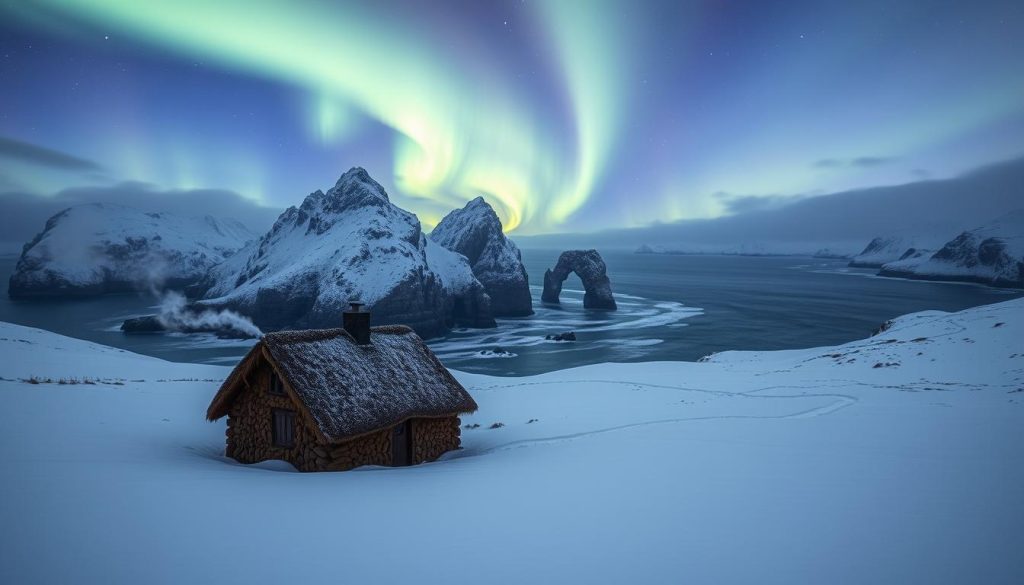
Embracing the Cold and Dark
The shorter days of winter create a dramatic backdrop for your travel experience. While the cold can be intense, it’s also the perfect time to bundle up and explore frozen landscapes. The lack of crowds means you’ll have attractions like snow-covered cliffs and quiet roads all to yourself. Just remember to check tunnel passes if you’re driving, as winter conditions can affect accessibility.
Chasing the Aurora Borealis
One of the biggest draws of winter is the chance to see the Northern Lights. On clear, dark nights, the sky comes alive with vibrant colors, creating a breathtaking spectacle. To maximize your chances, plan your trip around new moon phases and avoid light pollution. Many visitors find this experience to be the highlight of their journey.
Cozy Escapes and Cultural Immersion
When the cold becomes too much, retreat to the warmth of traditional grass-roofed houses or local cafés. Winter is the perfect time to connect with the country’s culture through storytelling, music, and hearty meals. These intimate moments offer a deeper understanding of the local way of life.
- Pack wisely: Bring thermal layers, waterproof gear, and sturdy boots to stay comfortable.
- Plan around daylight: Make the most of the limited hours by prioritizing outdoor activities early in the day.
- Enjoy the peace: Fewer tourists mean lower accommodation prices and a more relaxed atmosphere.
Winter in this destination is a time of reflection and discovery. Whether you’re marveling at the night sky or enjoying a quiet moment by the fire, the season offers a truly unique experience. Embrace its challenges, and you’ll find its rewards are well worth it.
Planning Your Trip Around Unpredictable Weather
Navigating unpredictable weather is part of the adventure when traveling to this destination. The weather here can change in an instant, so preparation is key. Locals often say, “If you don’t like the weather, wait five minutes.” This unpredictability adds excitement but also requires smart planning to ensure a smooth travel experience.
Layering, Packing, and Staying Flexible
Layering is your best friend when exploring this country. Start with a moisture-wicking base layer, add an insulating middle layer, and finish with a waterproof outer shell. This approach lets you adapt to sudden temperature shifts. Don’t forget sturdy, waterproof boots—essential for navigating wet or uneven roads.
Staying flexible with your itinerary is another important tip. If outdoor activities are affected by the weather, have backup plans like visiting local museums or cozy cafés. Checking sites for up-to-date forecasts before heading out can save you from unexpected surprises.
- Pack versatile clothing: Bring items that can be layered or adjusted as needed.
- Plan around the weather: Schedule outdoor activities during calmer conditions.
- Stay informed: Use apps or local resources to monitor changes in real-time.
By packing smartly and staying adaptable, you’ll make the most of your time here. Embrace the unpredictability—it’s part of what makes this destination so unique. With the right preparation, you’ll be ready for whatever the weather brings.
Transportation Tips: Navigating Island Roads and Tunnels
Getting around the islands is an adventure in itself, with winding roads and unique tunnels. Whether you choose to rent a car or rely on public transport, planning ahead ensures a smooth journey. Here’s what you need to know to navigate the archipelago like a pro.
Renting a Car vs. Public Transport Options
Renting a car offers the freedom to explore at your own pace. The islands’ scenic routes and hidden gems are best accessed by car, especially if you’re venturing off the beaten path. However, driving here requires confidence, as roads can be narrow and winding.
Public transport is a reliable alternative, with a well-planned bus system connecting major towns like Tórshavn. While it’s cost-effective, buses may not reach remote attractions, so plan your itinerary accordingly.
| Option | Pros | Cons |
|---|---|---|
| Renting a Car | Flexibility, access to remote areas | Narrow roads, requires confidence |
| Public Transport | Cost-effective, eco-friendly | Limited access to remote spots |
Local Driving Tips and Tunnel Pass Information
Driving in this country is an experience unlike any other. Be prepared for one-way roads, sudden weather changes, and tunnels that cut through mountains. A GPS is essential, as signage can be minimal in remote areas.
Tunnel passes are required for certain routes, with fees typically ranging from $5 to $10. These passes can be purchased online or at local service stations. In Tórshavn, parking rules are strictly enforced, so check for designated areas to avoid fines.
- Pack a GPS: Navigation is key on winding roads.
- Check tunnel passes: Plan ahead to avoid delays.
- Follow parking rules: Avoid fines in busy areas like Tórshavn.
Whether you choose to drive or take public transport, a little preparation goes a long way. Embrace the adventure, and you’ll find that getting around the islands is part of the charm.
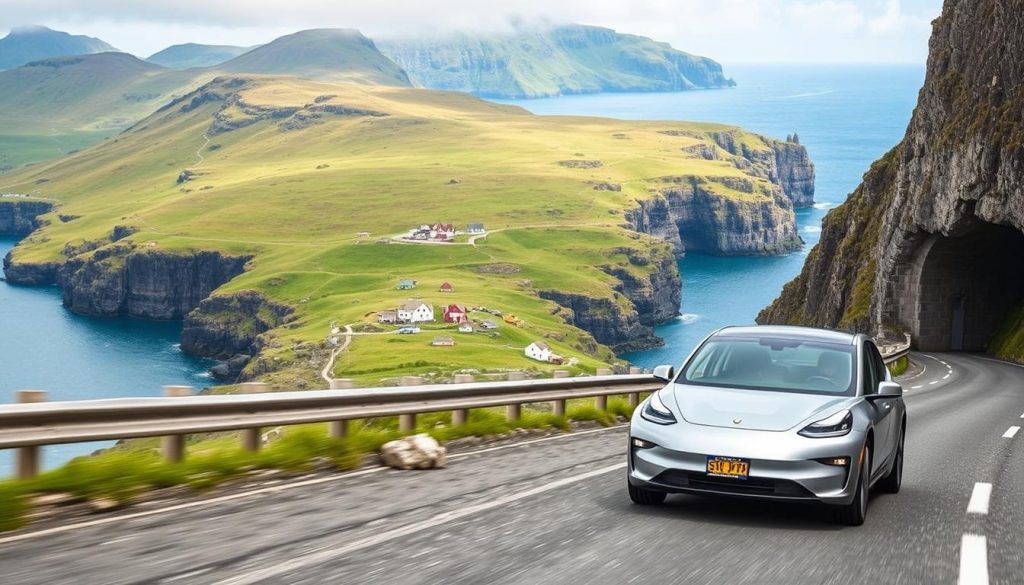
Local Cuisine and Cultural Experiences
Exploring the local cuisine is one of the most rewarding ways to connect with a destination’s culture. Here, the harsh climate has shaped a unique dining culture, where traditional methods like fermenting fish and lamb have become a celebrated art. This culinary heritage is not just about survival—it’s a testament to the resilience and creativity of the people.
Renowned restaurants like Koks and Raest have put this region on the world culinary map. These establishments showcase the best of local ingredients, from fresh seafood to organic lamb. Each dish tells a story, offering a taste of the island’s history and traditions.
Sampling Traditional Faroese Dishes
When you visit, sampling traditional dishes is a must. Start with fermented fish, a delicacy that reflects the faroese way of preserving food. Fresh seafood, like cod and salmon, is another highlight, often served with root vegetables like potatoes and turnips.
For a truly unique experience, try ræst, a dish made by fermenting lamb or fish for months. This method, born out of necessity, has become a celebrated part of the local cuisine. Pair your meal with a glass of locally brewed beer or a cup of coffee for a complete experience.
- Explore high-end restaurants: Koks and Raest offer Michelin-starred dining with a focus on local ingredients.
- Visit cozy cafés: Enjoy homemade cakes and pastries in quaint village settings.
- Try traditional dishes: From fermented fish to fresh seafood, each bite is a journey through history.
Food here is more than sustenance—it’s a way to connect with the country’s culture and heritage. Whether you’re dining in a world-class restaurant or a local café, every meal is an opportunity to experience the heart and soul of this unique destination.
Budget Travel Tips and Off-Peak Advantages
Traveling on a budget doesn’t mean you have to miss out on the magic of the Faroe Islands. With smart planning and a few insider tips, you can explore this stunning place without breaking the bank. Whether you’re visiting in the warmer months or during the quieter season, there are plenty of ways to save while still enjoying unforgettable experiences.
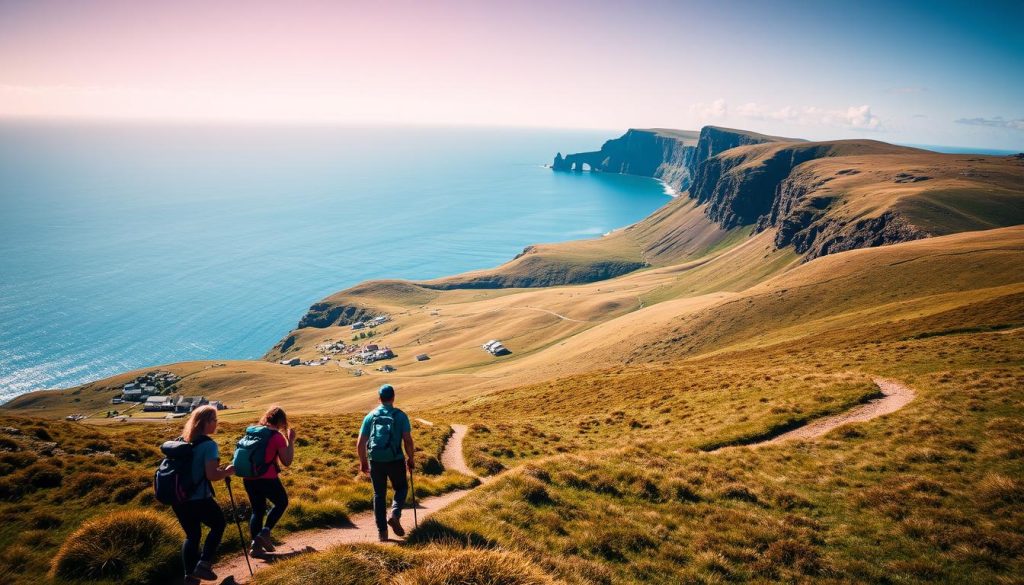
Cost-Saving Strategies and Flexible Itineraries
One of the best ways to save money is by traveling during off-peak months. Not only are flights and accommodations cheaper, but you’ll also avoid the crowds. This makes it easier to enjoy the island’s natural beauty and cultural attractions at your own pace.
Public transportation is another great way to cut costs. Buses connect major towns and are much more affordable than renting a car. Plus, they let you soak in the scenery without the stress of navigating narrow roads.
- Book in advance: Flights and accommodations are often cheaper when booked 2-3 months ahead.
- Travel midweek: Flights on Tuesdays or Wednesdays can save you up to 15% compared to weekend trips.
- Stay local: Choose Airbnb or guesthouses over hotels for a more affordable and authentic experience.
Flexibility is key when planning your trip. The temperature and weather can change quickly, so having a flexible itinerary allows you to adjust your plans and make the most of your time. Whether you’re hiking in the northern cliffs or exploring charming villages, being adaptable ensures a smooth and enjoyable adventure.
By following these tips, you can experience the Faroe Islands without overspending. From stunning landscapes to rich cultural traditions, this place offers something for every traveler, no matter your budget.
Conclusion
Every season in this stunning destination offers something special, making it a year-round gem. Whether you’re drawn to the vibrant energy of summer or the quiet magic of winter, this place promises unforgettable memories. With careful planning and a flexible itinerary, you’ll make the most of your time here.
Remember to pack layers, stay adaptable, and embrace the unpredictability of the weather. Local cuisine and cultural experiences will deepen your connection to this unique world. From hiking along dramatic cliffs to savoring traditional dishes, every thing you do here adds to the adventure.
This guide has equipped you with all the insights needed to choose the best time for your visit. So, start planning today and get ready to experience the wonder of this extraordinary destination on your own terms. Every day here is a new opportunity to create lasting memories.
The above is subject to change.
Check back often to TRAVEL.COM for the latest travel tips and deals.
Here are some Tours & Sightseeing suggestions that might pique your interests!
